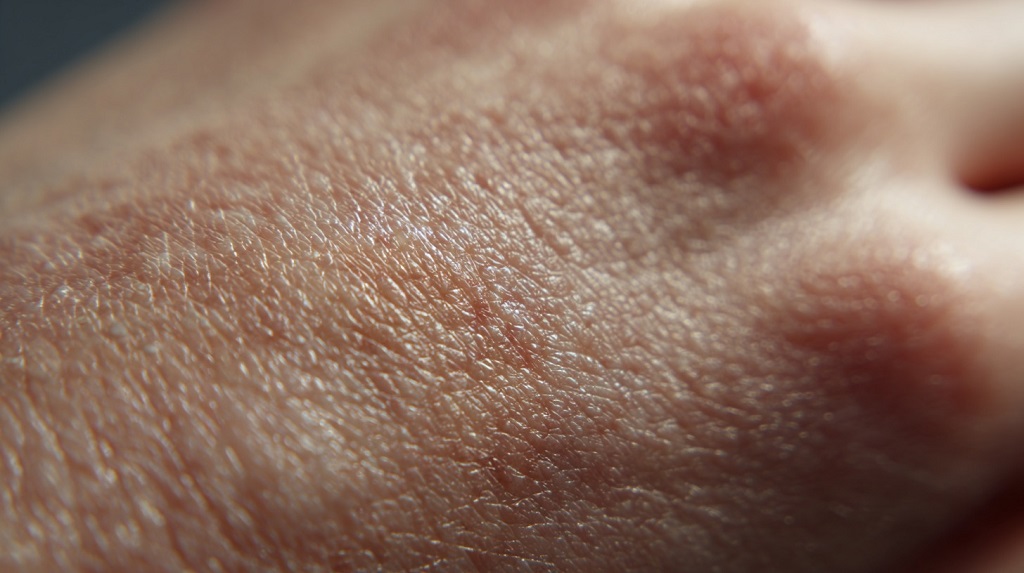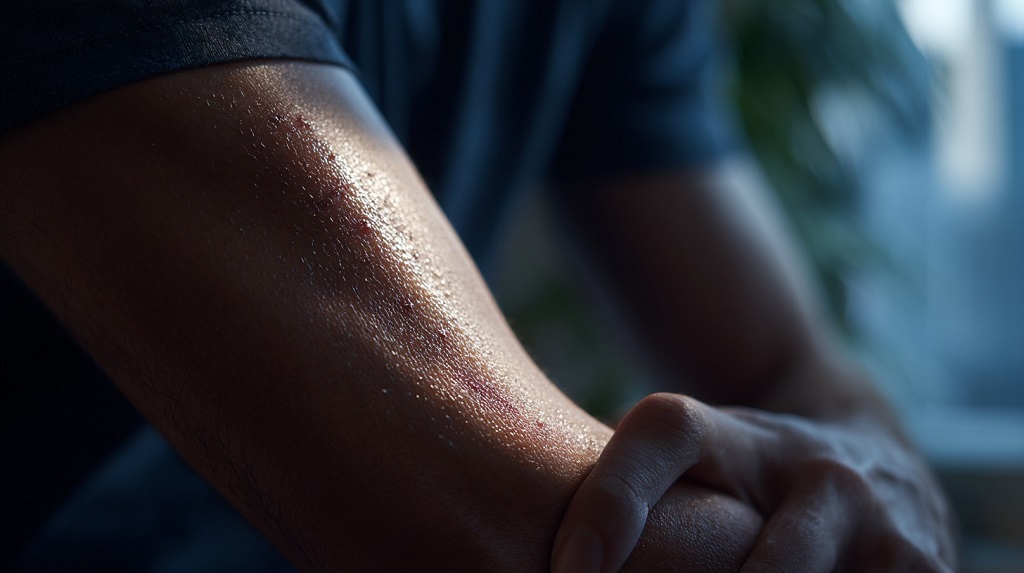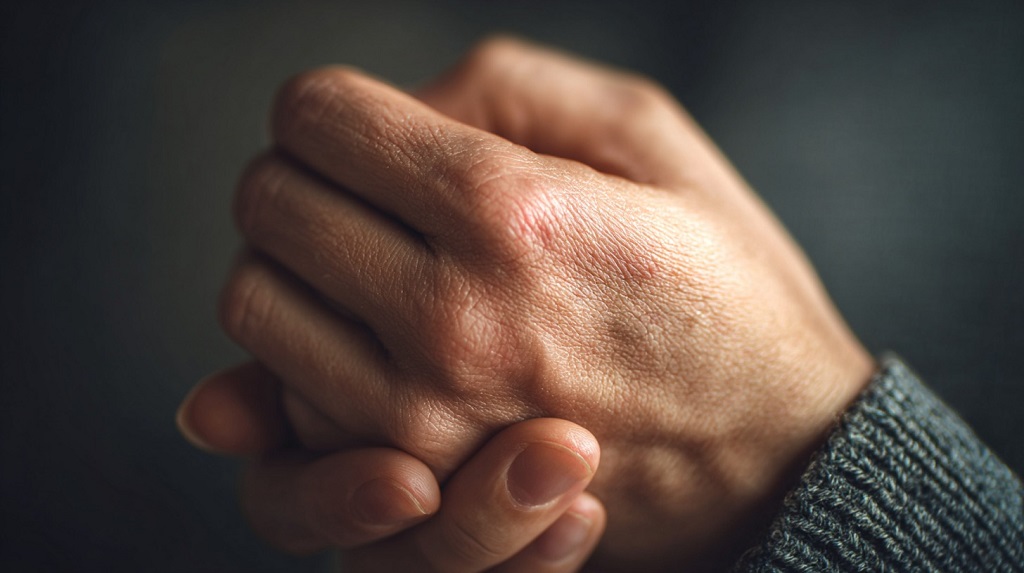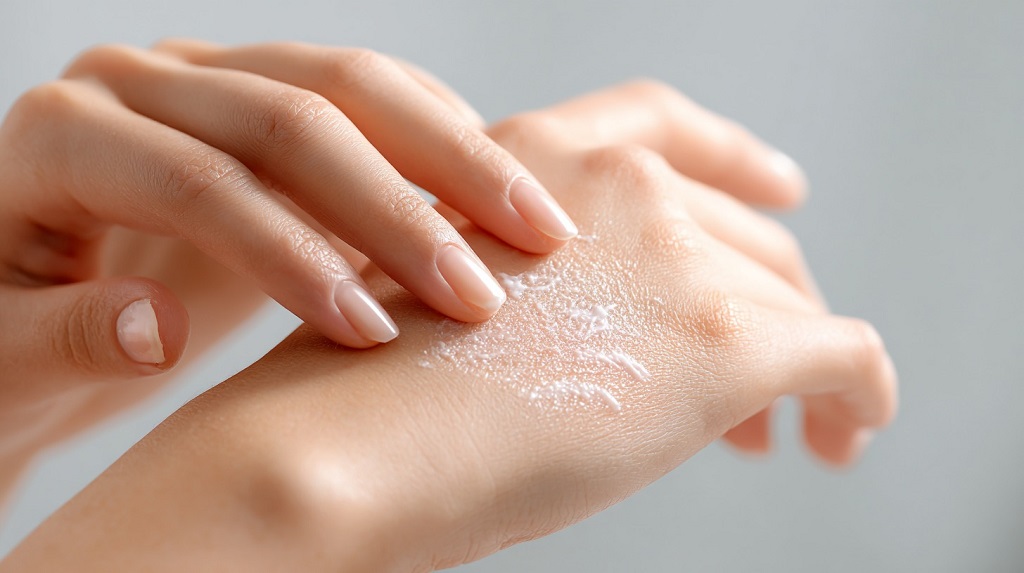Psoriasis affects far more people in the United States than many realize.
Many deal with flare-ups that disrupt sleep, confidence, and everyday routines.
Plenty of people also spend years trying different treatments, hoping to find something that fits their life instead of taking it over.
I’ll show you the most important insights about psoriasis in the sections ahead.
What is Psoriasis?

- Psoriasis is a chronic immune-driven skin condition that speeds up skin cell growth.
- Flare-ups often appear as red or discolored patches with dry, flaky scale.
- Symptoms come and go in cycles and can worsen with certain triggers.
- Psoriasis needs ongoing care because it can’t be fully cured.
How Common Is It Really?
According to the National Psoriasis Foundation, there are over 8 million people in the United States who have psoriasis.
Prevalence is not evenly distributed across every group. Studies have found higher rates among non-Hispanic white adults and lower rates among non-Hispanic Black adults.
Dermatologists point out that underdiagnosis in darker skin tones is a constant issue.
A study published by Andrew Alexis and Paul Blackcloud showed that psoriasis is often missed or identified late in people with darker skin because plaques can look different on darker skin tones.
Children Can Also Be Affected
Plenty of people think psoriasis only shows up in adults, but children can develop it too.
Many families don’t realize that until a dermatologist points it out, since early symptoms in kids can look like eczema or irritation from something harmless.
The Psoriatic Arthritis Connection
A large share of people eventually develop psoriatic arthritis, which affects the joints and can make everyday movement painful or stiff.
The National Psoriasis Foundation estimates that about 30 percent of people with psoriasis deal with joint symptoms at some point.
What Living With Psoriasis Feels Like

Living with psoriasis is something you really understand only when you’ve been through it.
People deal with more than patches on the skin. There are days when the itching won’t stop, moments when the burning feeling kicks in for no good reason, and times when the skin cracks right where you bend or move the most.
The discomfort can hit at the worst possible moments. It shows up during work, when you’re trying to sleep, or right when you’re about to leave the house. People living with psoriasis often say the same thing: you never know when a flare will get worse.
View this post on Instagram
A lot of the weight comes from the emotional side. Many people feel self-conscious when plaques show up in visible places like the scalp, face, hands, or elbows.
Some avoid certain shirts because flakes fall onto dark fabric.
There are even people who hesitate to shake hands or roll up sleeves because they’re tired of explaining what psoriasis is and that it isn’t contagious.
What Can Trigger Flare-Ups

1. Stress is one of the biggest triggers
When life gets chaotic, sleep gets messy, or when pressure builds, the skin often reacts.
People notice clearer periods during calmer months and worsening symptoms when things get hectic.
2. Weather plays a huge part
Cold, dry seasons can make plaques harsher and more irritating.
Indoor heating dries the air even more, which leaves skin feeling tight and flaky.
Sudden temperature swings can do the same. Some people feel better in warm weather, while others find heat and sweat just make everything more uncomfortable.
3. Infections can set off flares
Strep throat is a well-known one, especially for kids and teens.
Even a small cut, scrape, or burn can create a new patch in that exact spot.
Dermatologists call that the Koebner response, but for most people, it just feels like the skin reacting to anything that stresses it.
4. Habits matter as well
Alcohol, smoking, irregular sleep, and certain medications can all push symptoms into a flare.
No two people share the same triggers, so figuring out what sets off your skin becomes its own long-term project.
Once patterns become clear, managing psoriasis gets a little easier, even if the condition itself doesn’t completely back off.
What Treatments Are Available for Psoriasis?
Like I already mentioned earlier in the article, there is no definite cure for psoriasis.
Treatments focus on controlling symptoms, calming flare-ups, and giving people more comfortable days.
The good news is that there are plenty of options, and many people eventually find a mix that fits their skin and their routine.
Dermatologists usually build treatment plans step by step. They start with simple, targeted approaches and move to stronger options only when needed. Clinics that specialize in medical dermatology offer both classic treatments and newer targeted therapies, which gives people more flexibility than ever. This thoughtful progression helps ensure that each person receives care aligned with their skin’s unique needs.
Topical Treatments

Topicals are the first stop for most people.
Creams and ointments can ease itching, reduce redness, and help soften thick patches.
Vitamin D products slow cell growth, steroid creams calm irritation, and medicated shampoos help with scalp symptoms.
Many people end up using two or three different products as part of a daily routine.
Phototherapy
Some people benefit from ultraviolet light treatment.
Phototherapy uses controlled UVB light to slow down skin cell turnover and ease inflammation.
It can help when larger areas are affected or when topicals are not enough. Improvements usually show up after several weeks of steady sessions.
Oral Medications
Oral treatments work throughout the entire body.
Doctors often recommend them when psoriasis spreads, becomes persistent, or keeps returning after other care.
Older options like methotrexate and cyclosporine can help calm the immune activity behind psoriasis, and newer oral medications offer more targeted effects with fewer side effects for some people.
Biologic Treatments
Biologics are among the most advanced treatments available.
They target specific immune signals linked to psoriasis rather than suppressing the whole immune system.
Many people use them when other treatments stop working or when symptoms are too severe to manage with creams and pills alone.
Some biologics are taken at home, while others are given in a clinic.
And Once Again, Habits Can Have a Serious Impact on Psoriasis Flares
Stress is one of the biggest triggers. When life gets overwhelming, flare-ups often follow. Keeping stress in check won’t fix psoriasis, but it can keep symptoms from jumping out of nowhere.
Smoking and heavy drinking often make symptoms tougher to control, and cutting them back can lead to calmer skin.
Sleep plays a role, too, since irregular rest leaves the body more sensitive.
Even small changes in how you live day to day can make flare-ups easier to handle and support whatever treatment plan you already use.
Final Thoughts
People who live with it deal with far more than most of us ever notice.
There are routines, frustrations, and adjustments that become part of everyday life, and many of those details rarely get talked about.
My goal was to walk you through the parts that actually matter and give you a clearer sense of what the condition looks like in real life.
I hope this will help you see what people around you with psoriasis are dealing with.


